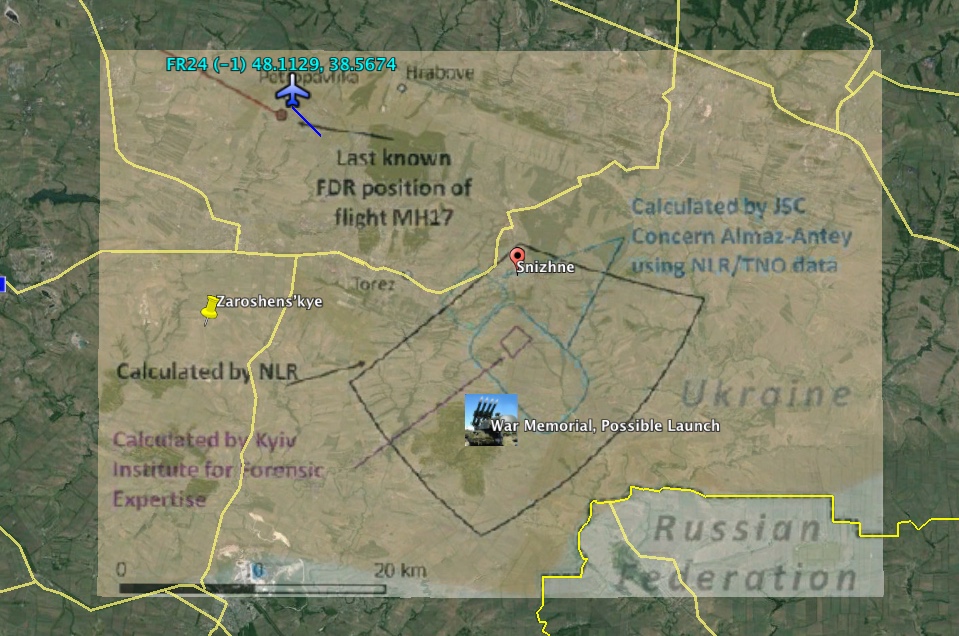BUK missile producer Almaz-Antey conducted live explosion tests with a BUK missile placed next to the cockpit of a plane similar in size to the MH17 777.
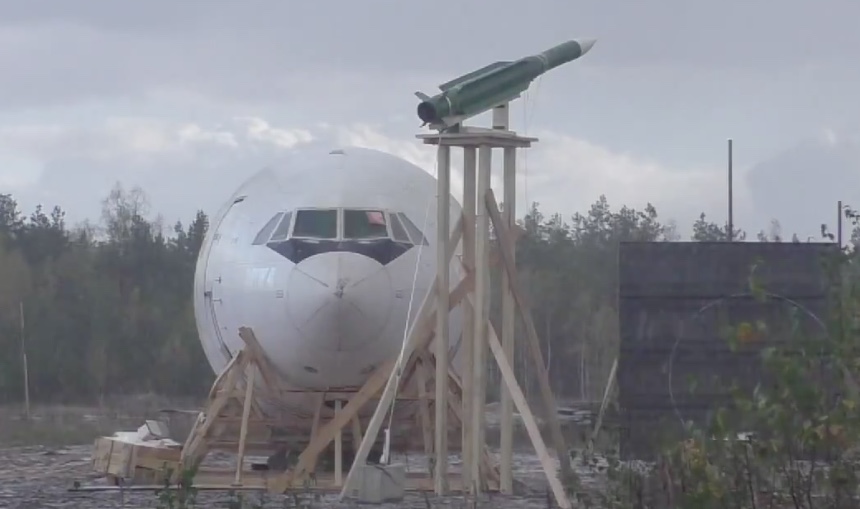
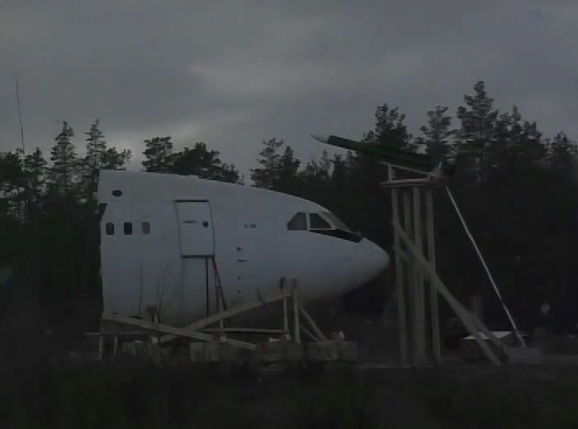
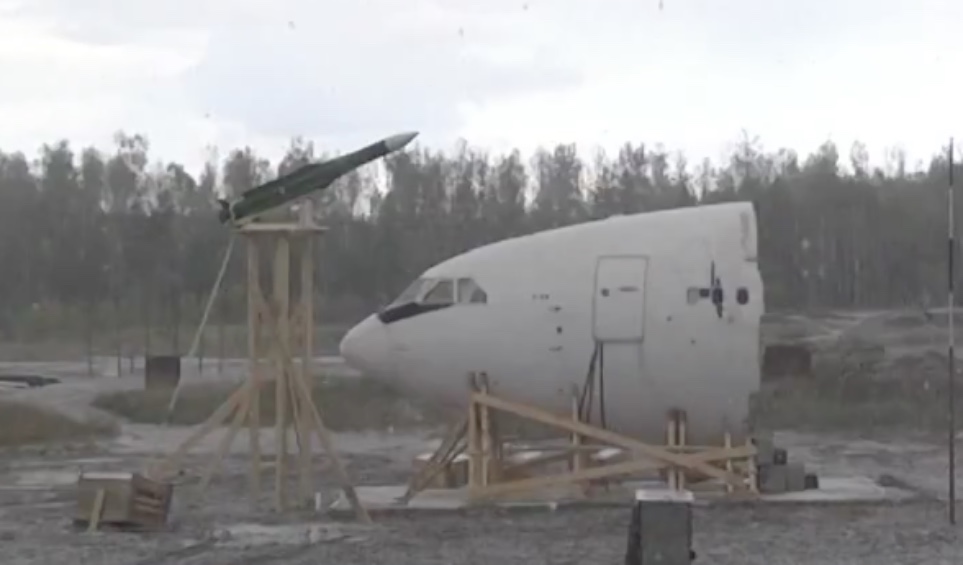
Result
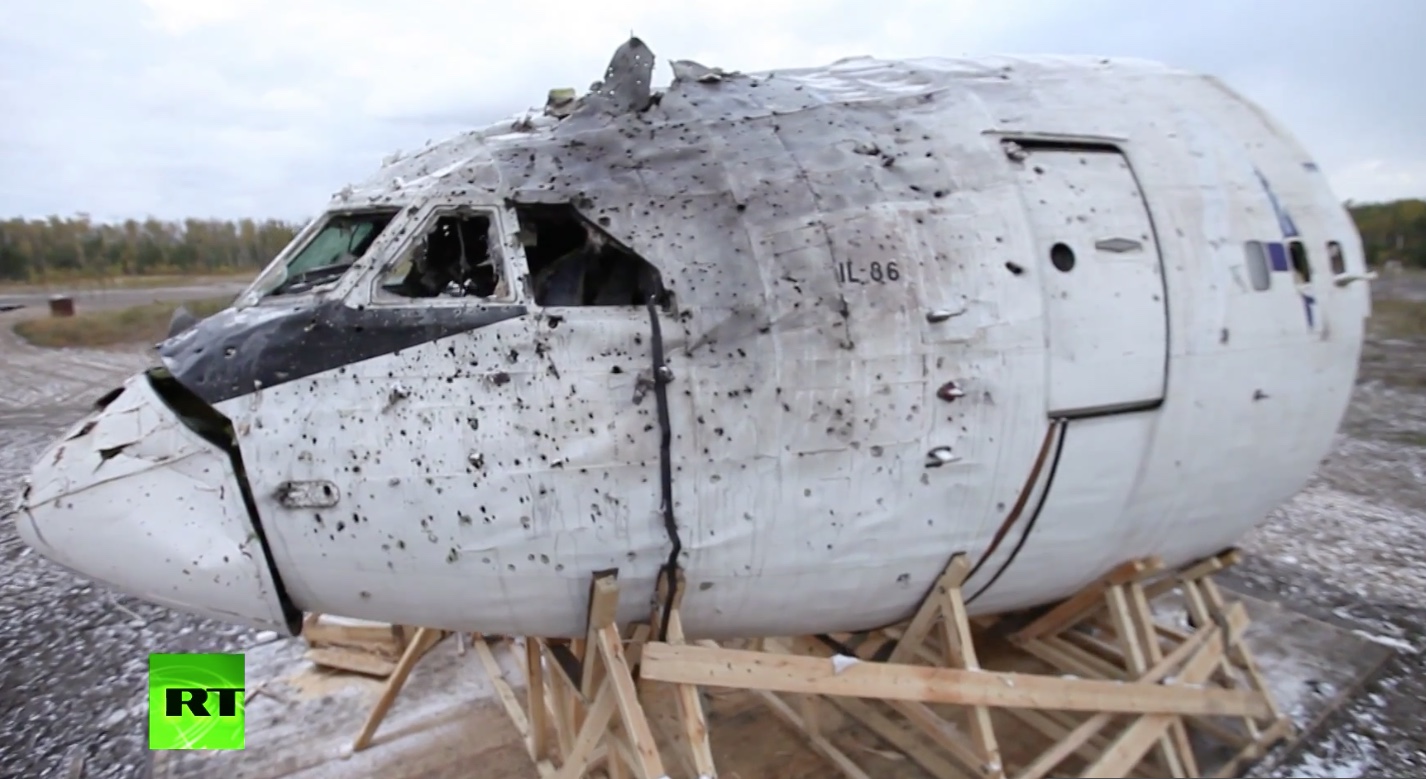
RT says:
While there is some small distortion from perpective and camera angles, the video provides some axis aligned shots that allow us to gauge the position of the warhead.
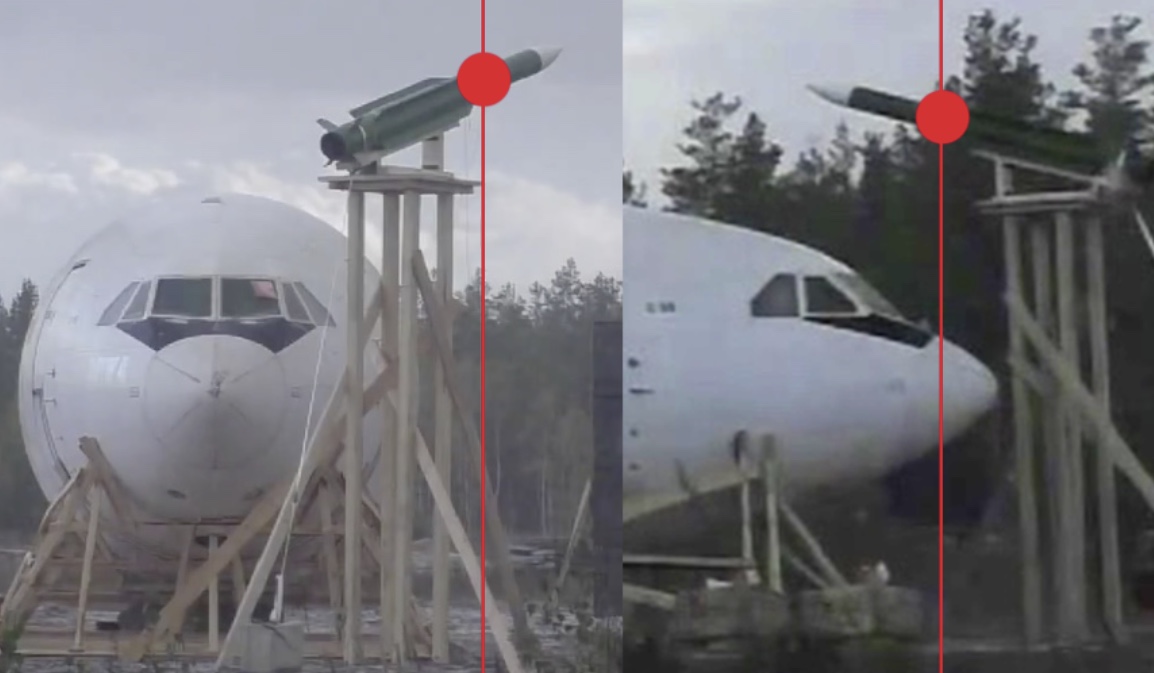
MH17 was on a track of 118 degrees, so a head on velocity would be 298°, by comparing the length of the missile in the front and side shots we can calculated [ atan(side/front) ] that the missile is rotated about 35° from a head on approach in this setup, so would have a heading of 298+35 = 333 degrees.
With the plane and missile in motion, my 2D simulator gives the resulting blast as:
http://tube.geogebra.org/material/simple/id/FP58nKZJ
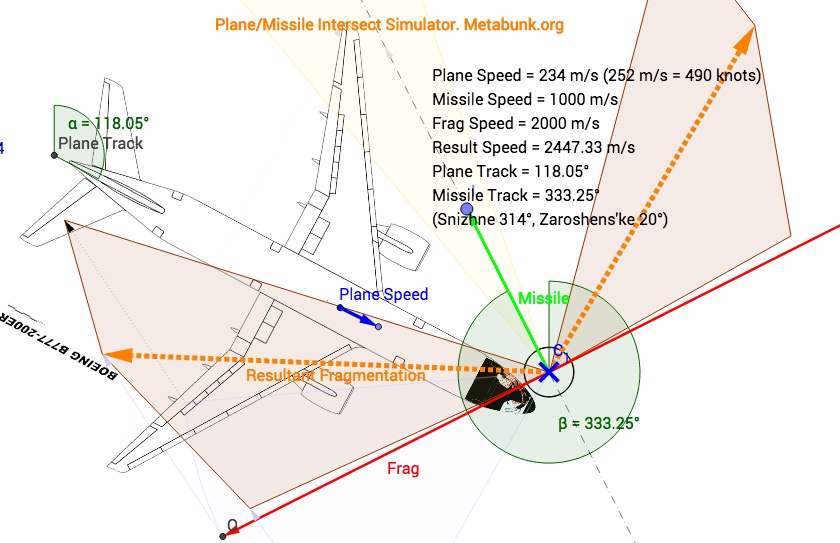
With the plane and missile static (as in this live test), it looks like:
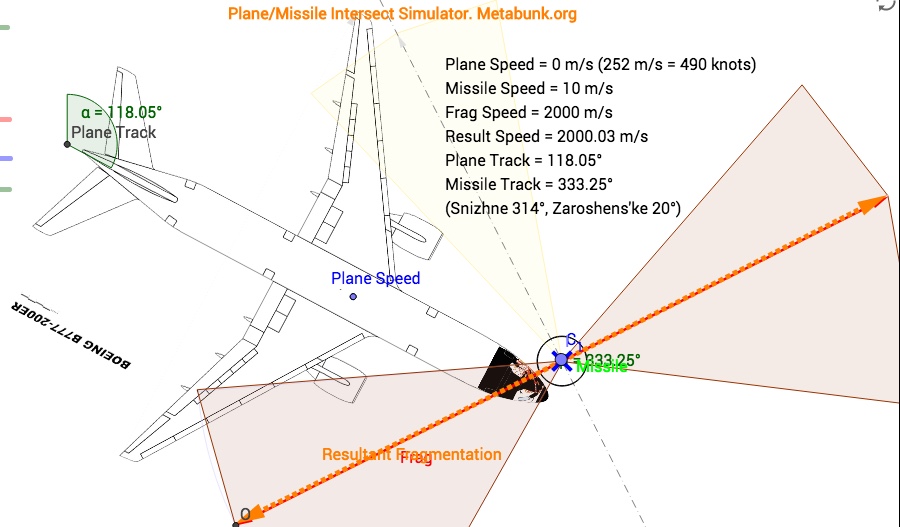
A moving missile from Zaroshens'ke looks like:
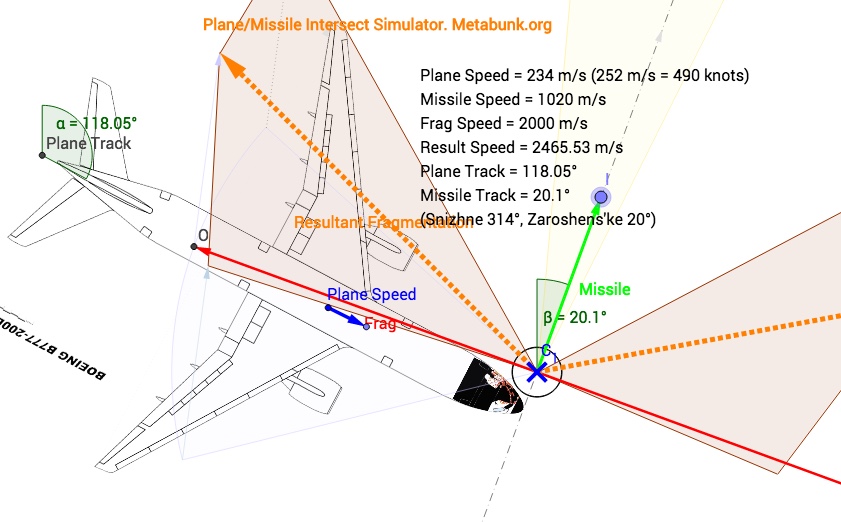
A moving missile from Snizhne looks like
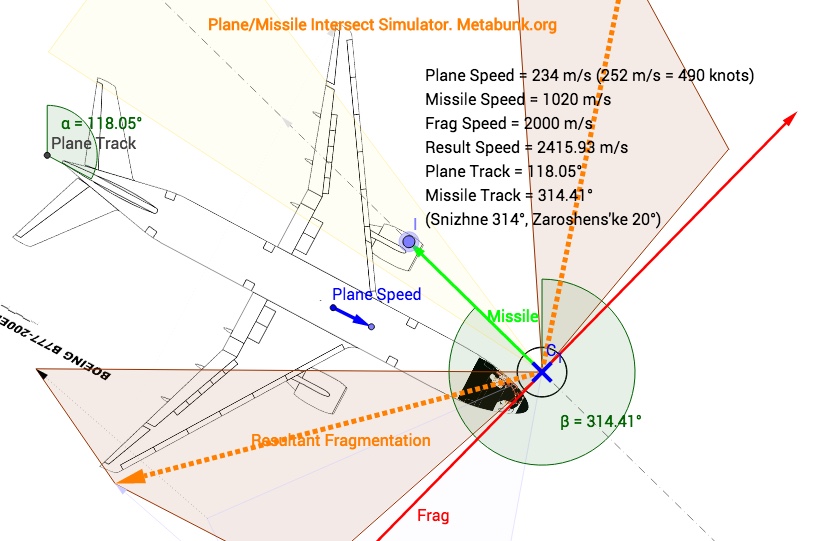
Hence, based on my 2D simulation, the results of the static test most closely resemble a missile from the Snizhne area. And given my model appears to match the results for the static test, that would imply it is reasonably accurate in terms of static dispersion. The rest is just simple velocity addition.



Result

RT says:
The idea (seems to be) to demonstrate that the missile's heading was coming from Zaroshens'ke (Unkranian territory), and not Snizhne (Russian backed rebel territory, closer to the Russian border). To do this they oriented the missile as if it were coming from Zaroshens'ke, which would be a heading of about 20°Almaz-Antey carried out two experiments simulating explosions near MH17. They determined the missile was an older BUK model 9M38 fired from an area under Ukrainian forces’ control, contesting the preliminary findings of the Dutch-led investigation.
While there is some small distortion from perpective and camera angles, the video provides some axis aligned shots that allow us to gauge the position of the warhead.

MH17 was on a track of 118 degrees, so a head on velocity would be 298°, by comparing the length of the missile in the front and side shots we can calculated [ atan(side/front) ] that the missile is rotated about 35° from a head on approach in this setup, so would have a heading of 298+35 = 333 degrees.
With the plane and missile in motion, my 2D simulator gives the resulting blast as:
http://tube.geogebra.org/material/simple/id/FP58nKZJ

With the plane and missile static (as in this live test), it looks like:

A moving missile from Zaroshens'ke looks like:

A moving missile from Snizhne looks like

Hence, based on my 2D simulation, the results of the static test most closely resemble a missile from the Snizhne area. And given my model appears to match the results for the static test, that would imply it is reasonably accurate in terms of static dispersion. The rest is just simple velocity addition.
Last edited:

